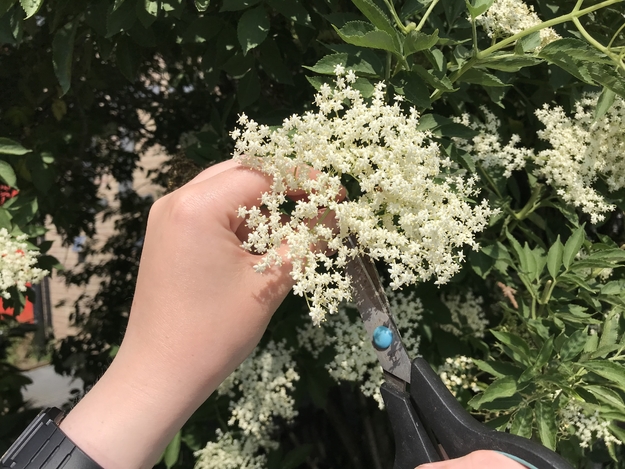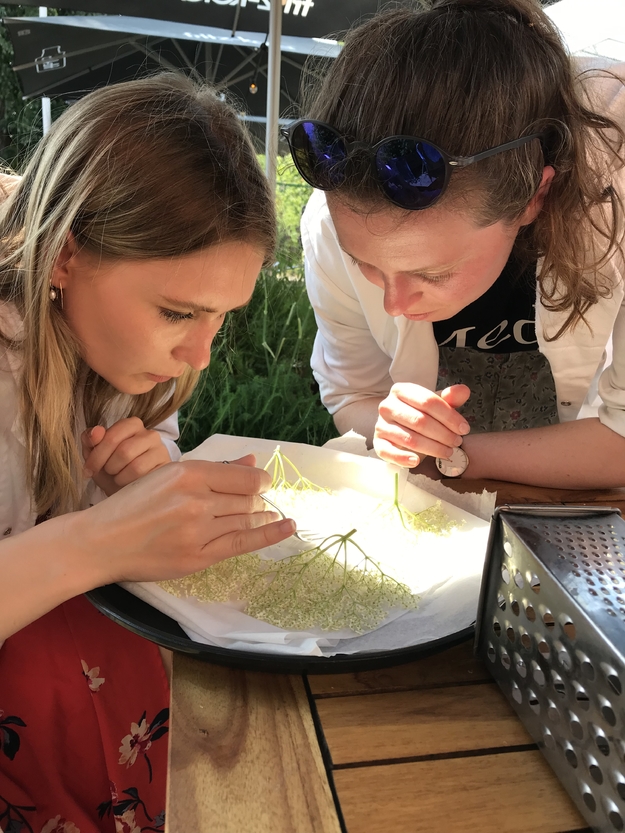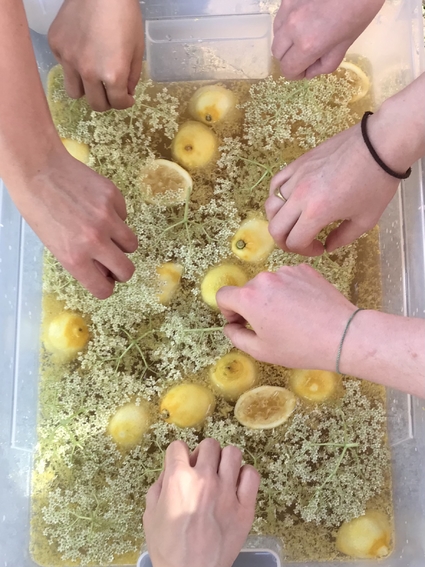The Elderflower tree is in full bloom and has many beautiful, yeast-filled flower heads which are perfect for making a summery celebration drink!
MediaMatic has previously made a batch of Elderflower champagne and I thought I would revive this event and bring attention back to the delights that Elderflowers hold.
Our Elderflower tree - Picking the biggest Elderflower heads as possible to make champagne
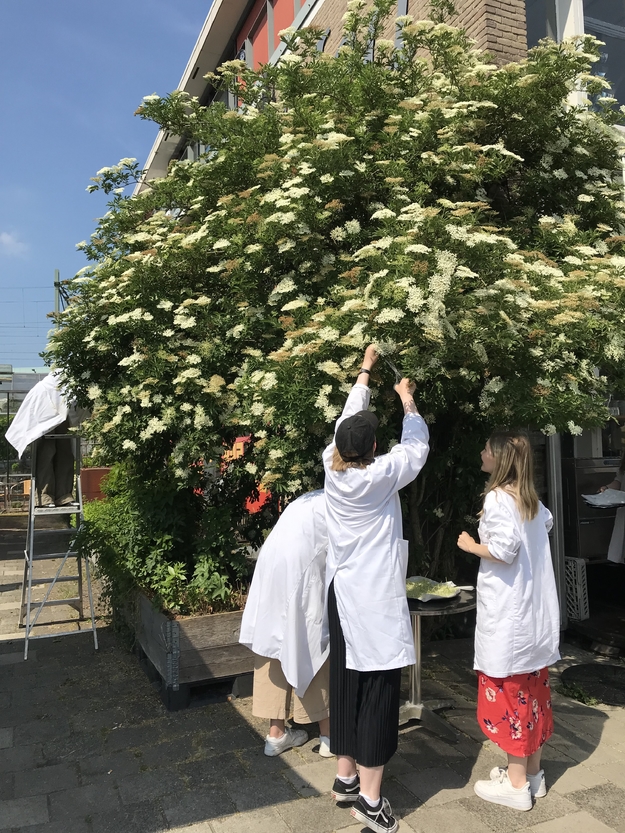
First fermentation steps: lets get the materials together
Materials needed:
- Sterile 20L bucket
- Jugs for pouring the sugar water
- Lemon juicers and graters
- Spoon for stirring
- Scissors and tray for the Elderflowers
Ingredients:
- 20L of water (2L of which should be hot to dissolve the sugar)
- 2kg sugar
- 5 tablespoons of white wine vinegar
- 10 lemons (juiced and zested)
- 20 Elderflower heads
Recipe:
Gather 20 large elderflower heads from all over the tree. You are looking for a yellow powder inside each white flower, that is the yeast which will fuel the champagne making magic! Leave them to rest on a tray (out of direct sunlight to prevent them from wilting).
Maureen picking Elderflower heads - Elderflower champagne on the way!
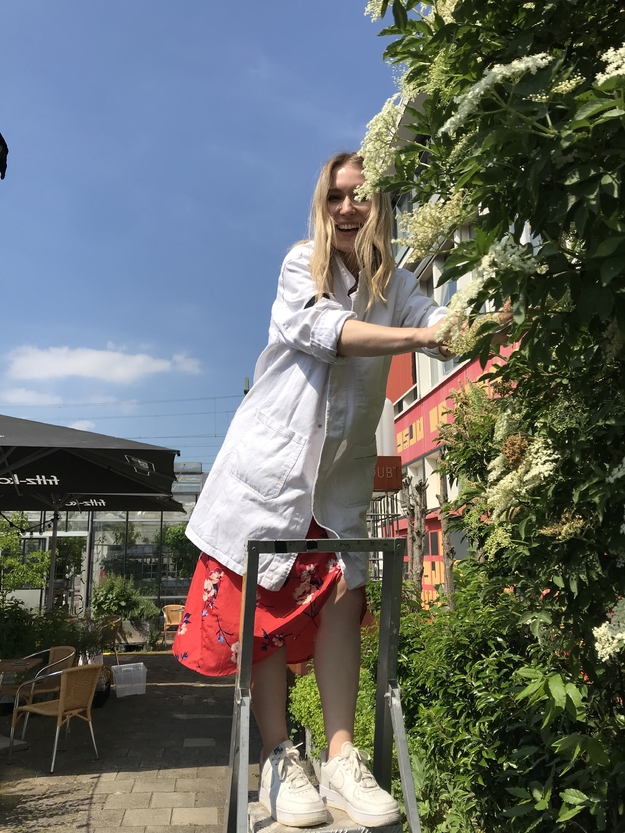
Grab your bucket and fill it with 18L of water. Combine the 2kg of sugar with the last 2L of hot water and stir until it is all dissolved. Any sugar is fine; we used brown sugar which gave the liquid a darker colour.
Time for a bit of sweetness! - Adding the dissolved sugar to the Elderflower champagne bucket

In the meantime, wash your lemons well (no soap though!), juice, and zest them all. Add the juice, zest and leftover half lemons to the bucket along with the dissolved sugar water and 5tbs of white wine vinegar.
Zesting and juicing lemons for the Elderflower champagne - Many hands make light work!
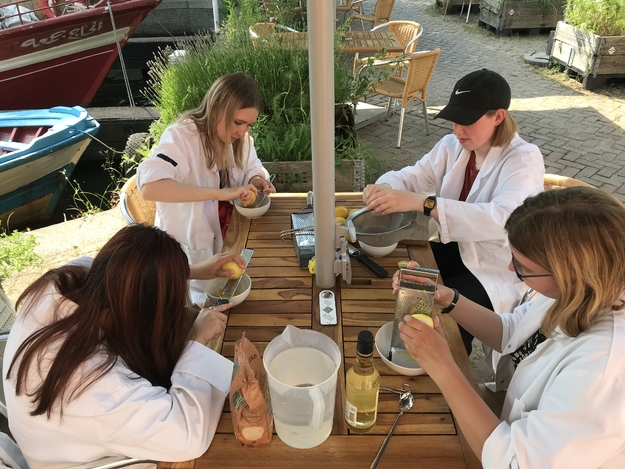
Get your 20 Elderflower heads and check for any remaining bugs and remove them gently. Then grab the stalk and gently submerge the flowers so they float with the stalk sticking out of the water. The stalk can give a rather bitter taste to the champagne so that is something to avoid!
Now cover your creation with a tea towel or single sheet of fabric to stop anything falling in whilst you leave it to ferment at room temperature. Leave for approximately 6 days to ferment, you should smell a slight musty and "fermenty" smell after day 2! If it looks mouldy, has bubbles, and a smell, it is working!
Last step: take some wicked photos of your summer creation!
The next step is to bottle the champagne for the last stage of fermenting and will be updated soon!
